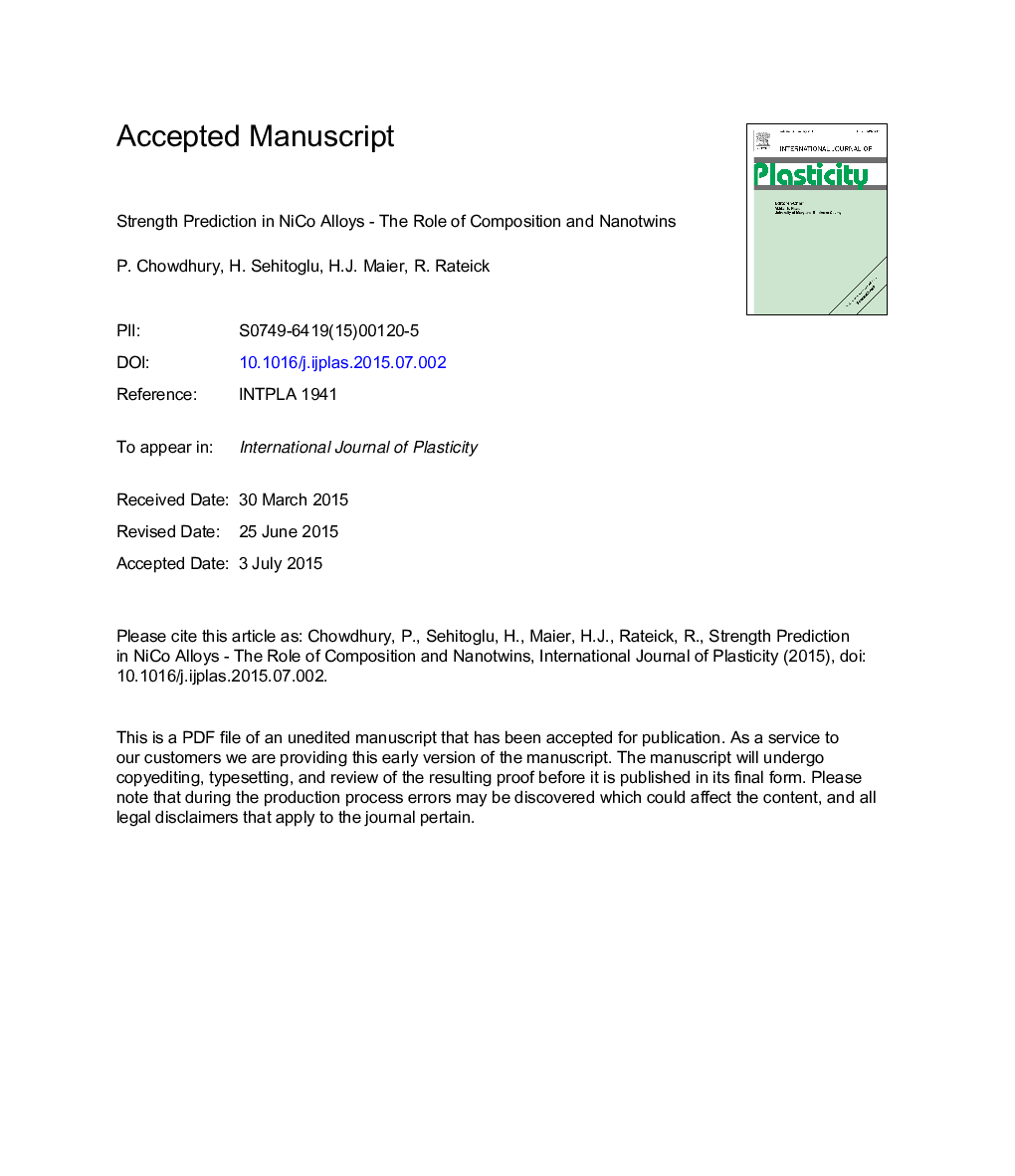| Article ID | Journal | Published Year | Pages | File Type |
|---|---|---|---|---|
| 7174917 | International Journal of Plasticity | 2016 | 42 Pages |
Abstract
Experimentally, hardening behaviors of nano-twinned Ni-Co alloys in tension demonstrate strong composition dependence. The strengthening characteristics improve substantially with increasing Co content (up to 2.9% Co), however, accompanied by an abrupt decline (at 5.52% Co), suggesting the existence of a critical composition. On theoretical grounds, atomistic modeling is performed to rationalize the experimental observations. First, the origin of Co content effects is traced back to an atomic level competition between solid solution hardening and Suzuki segregation processes, resulting in a non-uniform γ surface variation. Secondly, the different slip transfer mechanisms across a coherent twin boundary are found to experience altered degrees of unstable fault energies (γus) owing to various residual dislocations. With evolving incident/residual slip, the γus values first increase, and then attain saturated levels. Thus-computed γus magnitudes are converted into corresponding frictional stresses within a Peierls-Nabarro modeling framework. Then, critical resolved shear stresses (CRSS) are predicted for different Ni-Co alloys. In conclusion, the apparently puzzling trends in the Ni-Co macroscopic strengths can be both qualitatively and quantitatively theorized by considering the combined effects of: (a) the twin influenced slip activities at the mesoscale and (b) the alloying induced fault energetics at the quantum scale.
Keywords
Related Topics
Physical Sciences and Engineering
Engineering
Mechanical Engineering
Authors
P. Chowdhury, H. Sehitoglu, H.J. Maier, R. Rateick,
